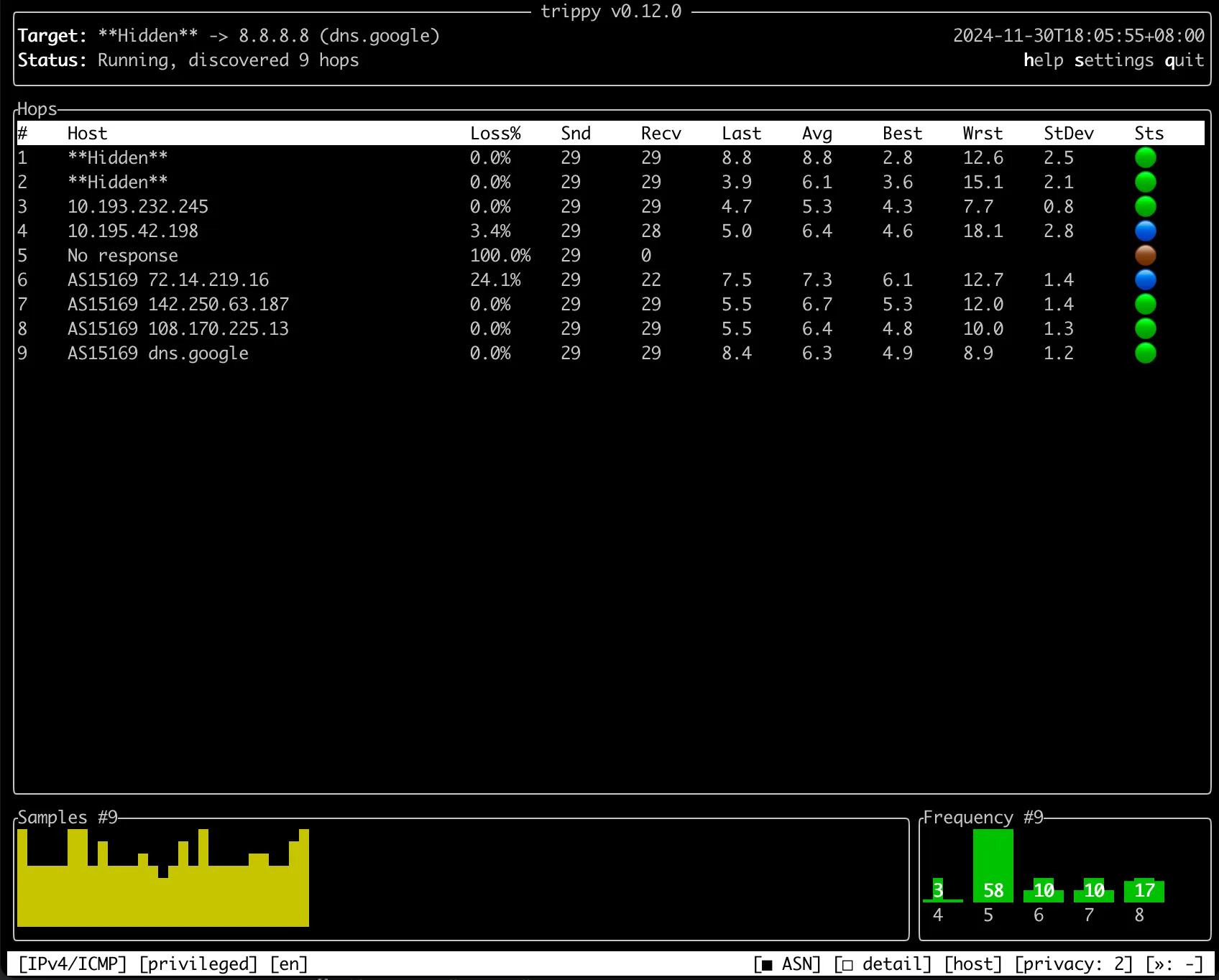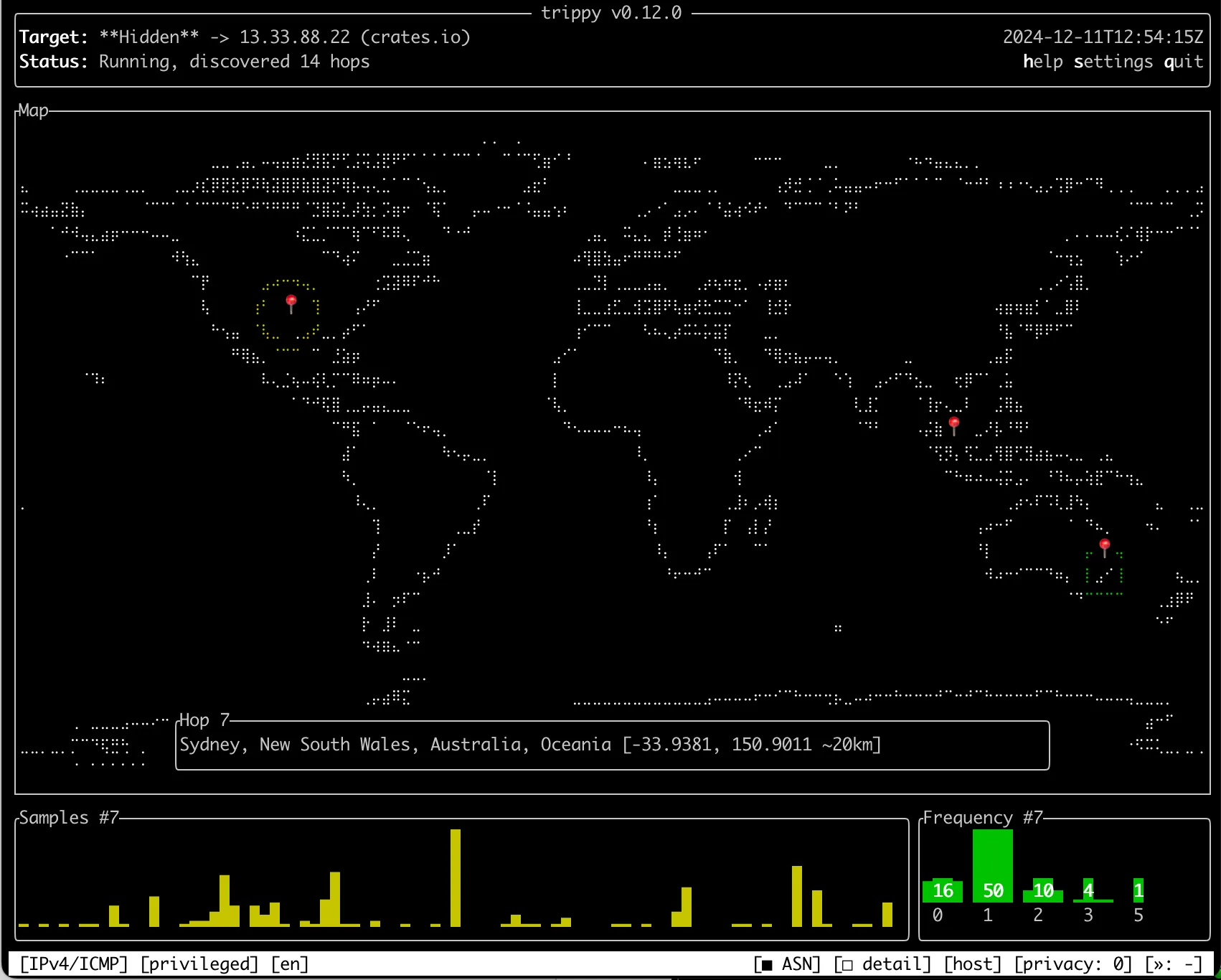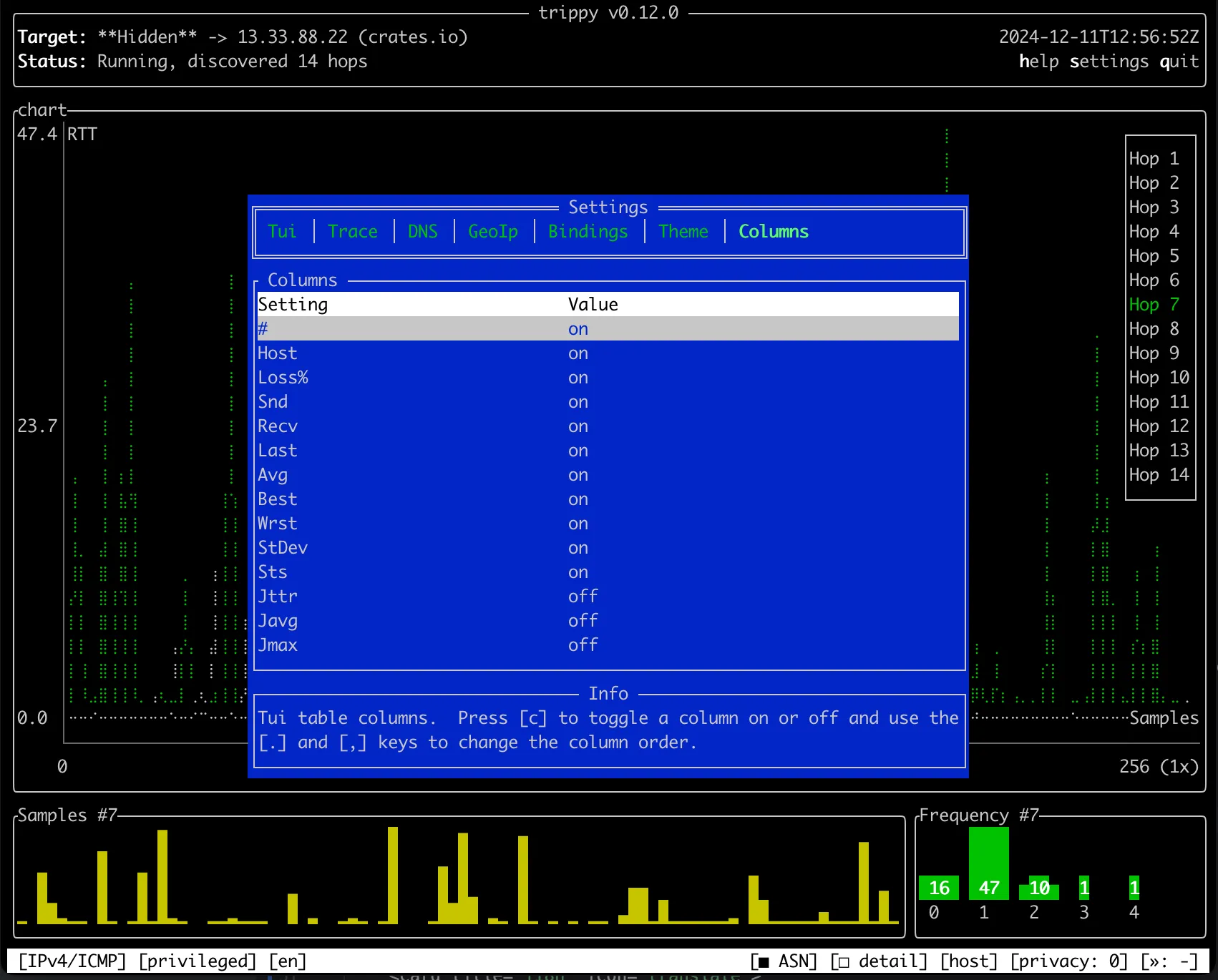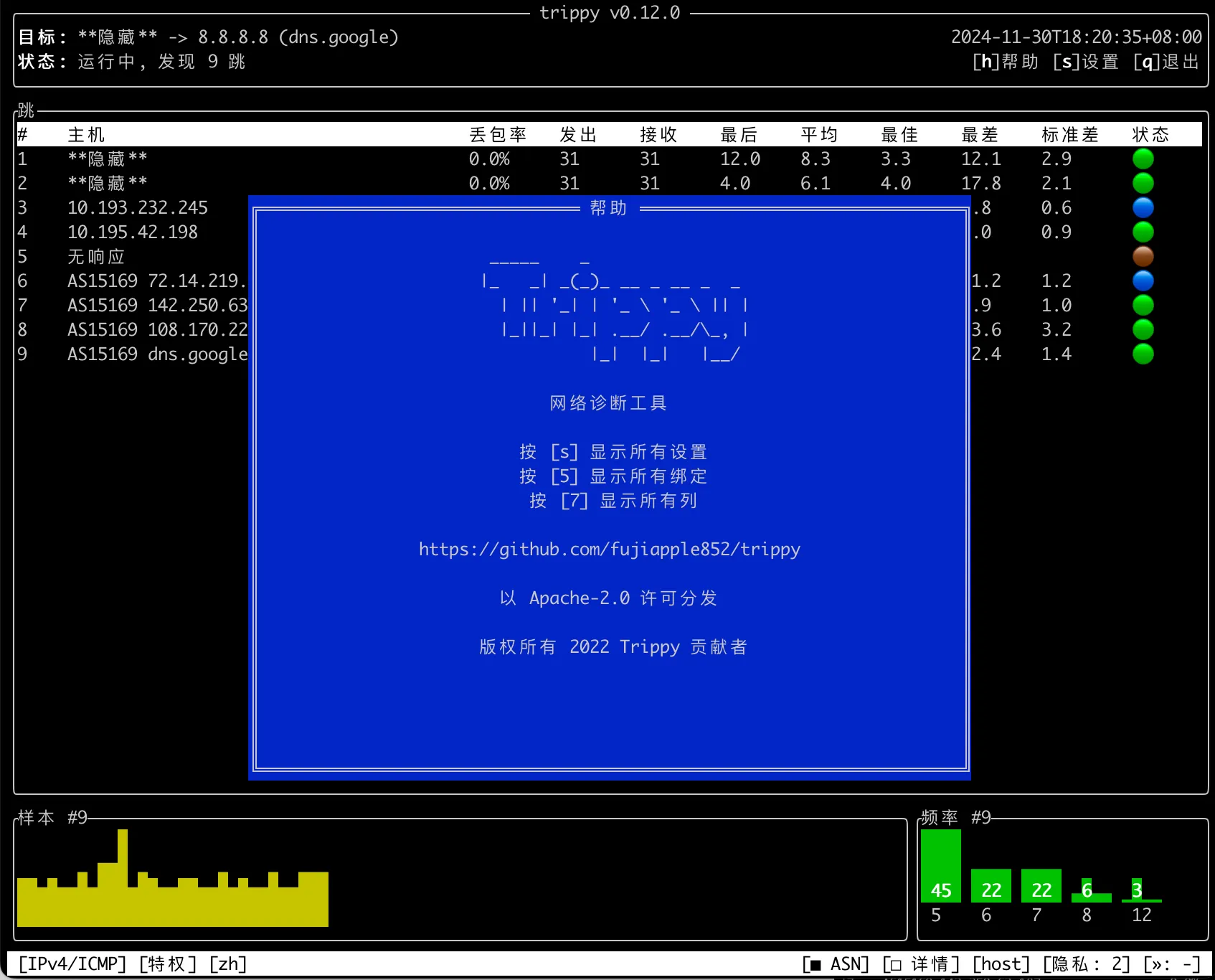Powerful tracing features
ICMP,UDP&TCPoverIPv4&IPv6protocols- Fully customizable tracing options
dublin🇮🇪 andparis🇫🇷 ECMP algorithmsICMPextensions (e.g.MPLS)- Reverse
DNSandASNlookups NATdetection- Run in unprivileged mode

Powerful tracing features
ICMP, UDP & TCP over IPv4 & IPv6 protocolsdublin 🇮🇪 and paris 🇫🇷 ECMP algorithmsICMP extensions (e.g. MPLS)DNS and ASN lookupsNAT detection
Visualize GeoIp on a world map
MaxMind and IPinfo databases
Run on your platform
Linux, macOS, Windows, *BSDx86_64, aarch64, arm7 architecturesLinux
macOS
Windows
*BSD
Highly customization TUI

Trace in your language
TUI translated into 10 languages:
